Ann-Margret — the iconic star who danced with Elvis, kissed Jack Nicholson and sang sold-out venues in Vegas over the course of her storied career — turns 80 today (April 28). Here, we revisit our 2017 cover story with her, in which film critic Richard Crouse examines the enigmatic performer’s raison d’être.
Ann-Margret shook and shimmied her way into public consciousness, bookending her star-turning role in 1963’s Bye Bye Birdie with some of the fiercest dancing ever committed to film. She was the kitten with a whip, a fresh-faced sex symbol who filled the gap between Marilyn Monroe and Rachel Welch only to be shunted aside by a changing America in the tumultuous ’60s, resurrected as B movie queen, then Oscar nominee.
This month, 56 years after her film debut, the 75-year-old Ann-Margret stars opposite Morgan Freeman, Alan Arkin and Michael Caine in Going in Style, a comedy about retirees who knock off the bank that made off with their pension fund. As Annie, a feisty grocery store clerk who seduces Arkin, she is luminous, a reminder that, as Betty Friedan said, “Aging is not lost youth but a new stage of opportunity and strength.”
And Ann-Margret knows about strength. While Elvis Presley affectionately called her Rusty, her Going in Style co-star Alan Arkin says she is “an absolute joy.” But Ann-Margret’s closest friends have a different way of describing the legendary star.
“They call me Slugger,” she laughs. “One of my friends gave me the name because I’ve been knocked down so many times. I have had accidents in my life but I keep getting up. A friend gave me this gold pin, a gold pair of boxing gloves. I deserve that. I earned it.”
That resilience was put to the test in 1972 when a near fatal fall almost put an end to her career. Performing at the Sahara Hotel in Lake Tahoe, she fell from an elevated platform to the ground, breaking her left arm, cheekbone and jawbone.
“There was a dinner performance and a midnight,” she says. “That particular night, we did the dinner and we were just going into the midnight. I arrived via a platform 22 feet up in the air. They hadn’t told us that if it leaned over more than six inches, it would flip and I would be thrown. There was one man doing one of the ropes in front and one man doing the other one. I guess one man did it too fast. I don’t know. It just wasn’t the same. There was a bar in front of me. I couldn’t get out. It flipped and I flipped. That’s what they told me. I woke up and I couldn’t move because they had put my teeth together. They didn’t show me a mirror. I knew something must be really wrong if they won’t show me a mirror.”
Despite worries she may never perform again, the all-round entertainer fought and, with the help of neuro-, plastic and orthopedic surgeons, was on stage in just 10 weeks. “I can’t believe I’m still here,” she says. “That I’m alive after all the things that have happened.”
The Viva Las Vegas star is a survivor with a kitten’s-purr voice and hard edge she says she inherited from her folks, Gustav and Anna Olsson. “I learned from my parents to never ever give up.”
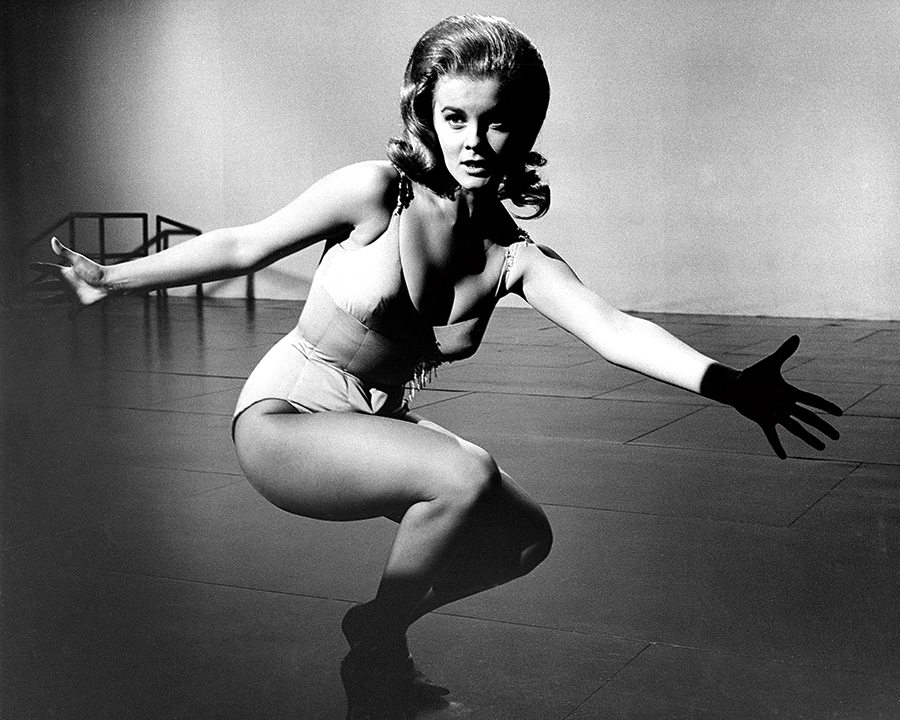
That brashness took her from Valsjöbyn, a tiny Swedish village near the Arctic Circle with a population of just 162, to the heights of Hollywood. Life in the isolated community was tough. Unless you were a farmer or lumberjack, making a living was even tougher, so electrician Gustav looked to America to better his family’s lot.
“You’ve heard of tough Swedes? Daddy left when I was eight months old. He wanted to go to America but it was during World War II, and it was too dangerous to bring us along. So for five years, we were in Valsjöbyn, and Daddy was in Chicago. Then finally, when the war was over, we could join him.”
In November 1946, after years of communicating by mail and 12 days at sea, the family finally reunited.
“When we arrived in New York City on this huge ship, the Gripsholm, Daddy was there waving to us. He always looked so nice. He had this hat on, a fedora. It was December, and it was cold, and he just looked so handsome. Of course, Mother pointed out, ‘There’s your Daddy,’ in Swedish because we didn’t know any English.”
Arriving in America
On that first night in America, Gustav took Anna and Ann-Margret to a temple of entertainment, a place that shaped the rest of his daughter’s life. It sounds like a Hollywood biopic cliché but the show biz bug bit the youngster when she first laid eyes on Radio City Music Hall. The lavish lobby, the Art Deco auditorium that could fit the entire population of Valsjöbyn 37 times over, the orchestra and, of course, the high-kicking Rockettes were unlike anything she had ever seen. “I can’t imagine what my face must have looked like.”
Dancing with the Rockettes would have to wait until she acclimatized to her new country. The three settled near relatives in Fox Lake, Ill., a small town 45 minutes northwest of Chicago. Surrounded by aunts and uncles who taught them to speak English, the youngster soaked it all in. “I hit the ground running. I didn’t want to be called different.
Classes at the Marjorie Young School of Dance nurtured her desire to perform. “I remember taking dance lessons and I had no idea what the teacher was saying. I just looked at what she was doing.”
Dance training led to recitals in costumes her mother sewed, which led to high school shows, which led to spots on TV shows like Ted Mack’s Amateur Hour.
The teen basked in the spotlight. Slipping into a different persona under the glare of stage lights freed her. “The hardest part when I do my live show, when I start, is when I sit down and say, ‘Hello, everybody, good evening,’ that is me. But the numbers I do is somebody else. It is so hard to explain, but I know a lot of entertainers are that way. I guess it is protection.”
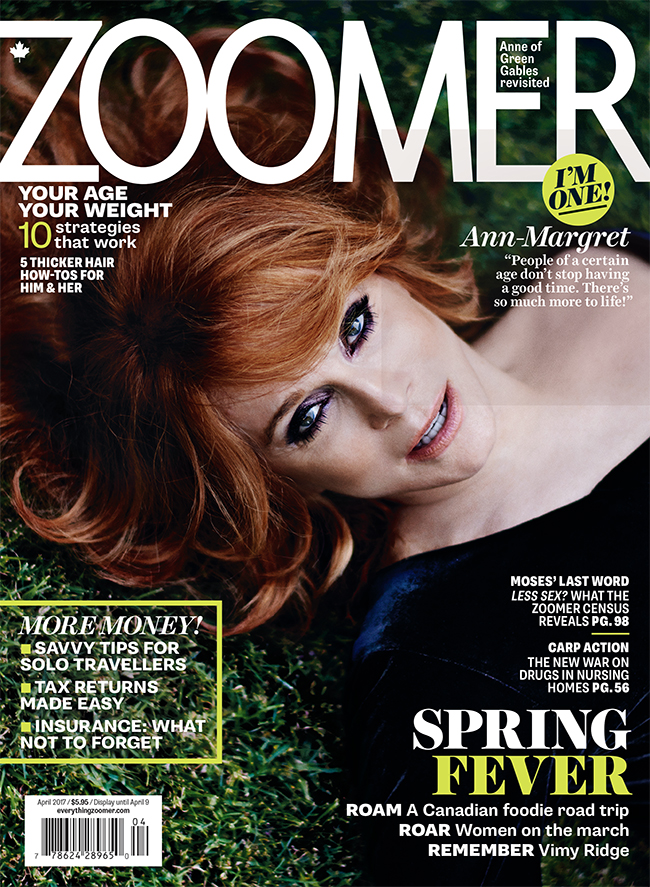
By the time she majored in speech at Northwestern University, she was moonlighting, playing at Chicago area clubs like The Mist with her jazz combo, the Suttletones (“Because we weren’t very subtle,” she joked to the Saturday Evening Post).
“I was about to go to Las Vegas when I took my last name off. Ann-Margret is my first name. I don’t have a middle name. I explained to Mommy and Daddy that I did not want them to be hurt by anything other people might say about me. I never wanted to make them sad, make them embarrassed.
“They understood but they were so scared. But since I was four years old, I sang with Mother and we did duets. We would sing at wedding receptions. They’d always say, ‘You get up there and sing something for us.'”
A false start landed the Suttletones in Los Angeles.
“We thought we had a job in Las Vegas so we went there with piano, bass and drums, and they said, ‘We’re so sorry. We like the band we have here and we’re keeping them.’ So we had driven all the way and then we drove to Los Angeles and, after going to every place, we found a job there.”
Months of gigging led them back to Vegas, to the lounge at the Dunes and 10 days and nights with a famous comedian that would change her life.
George Burns, whom she lovingly calls Mr. Burns, asked for her to audition for his annual Christmas shows at the Sahara. Impressed, Burns hired her, giving her three tunes and a dance number—they performed a vaudevillian soft-shoe routine together—in the December 1960 shows. She was an instant sensation. Variety said, “George Burns has a gold mine in Ann-Margret … she has a definite style of her own, which can easily guide her to star status.”
RCA Victor and 20th Century-Fox both came calling, recording and film contracts in hand. After playing Bette Davis’s daughter in Pocket Full of Miracles and appearing in the Rodgers and Hammerstein musical State Fair, the Golden Globes dubbed her International Star of Tomorrow.
It was her third movie that made her an icon. In Bye Bye Birdie, a rock star makes a farewell appearance before being drafted. Ann-Margret plays Kim McAfee, the teenage girl chosen to receive the coveted “one last kiss” from Conrad Birdie.
Months after wrapping principal photography, director George Sidney called the starlet back to the studio. “I thought I’d finished the movie and I went down to colour my hair—my real hair colour is dark brown. Then six months later, I had to go back to the red.” His idea was to shoot opening and closing bumpers to showcase Ann-Margret’s sex appeal.
Paul Lynde, her on-screen father, said, “They should have retitled it ‘Hello, Ann-Margret!’ They cut several of my and the other actors’ best scenes and shot new ones for her so she could do her teenage sex-bombshell act.”
At a cost of $60,000, she was placed on risers six feet in the air and surrounded by wind machines. “It was kind of exciting,” she says.
There, they shot the now famous title song footage, complete with dancing so torrid Life raved, “it almost replaces the central heating in the theater.”
Years later, Mad Men confirmed the enduring appeal of the scenes in the episode “Love Among the Ruins.” Said Don Draper, “Men want her and women want to be her.”
From Bye Bye Birdie to Biker
Bye Bye Birdie‘s movie première at Radio City Music Hall, 16 years after she first laid eyes on the place, was the highest first-week grossing film to date at the venue. It was the tipping point, the moment Ann-Margret became a sex symbol, albeit a wholesome one.
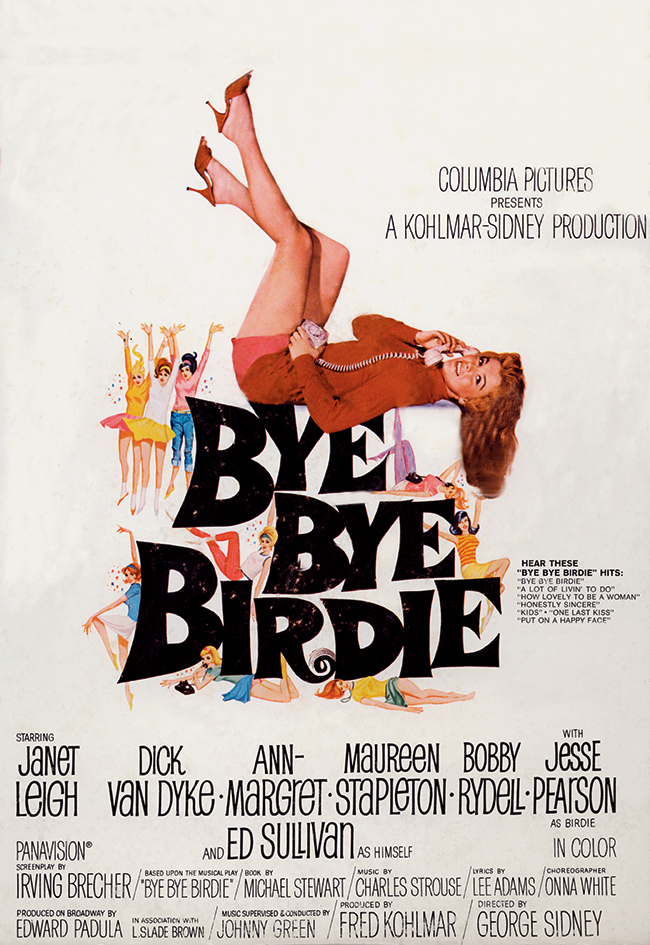
The Swedish All-American Girl. She was red hot, even voicing Ann-Margrock, an animated version of herself on The Flintstones.
The little girl who once marvelled at the Rockettes was now a grown-up star who would soon develop a conflicted relationship with fame and her sex kitten persona. When asked if she was comfortable with her glamour girl image, she is emphatic. “No. Never, never, never.”
“I don’t know who that person is. I don’t know who that is.” She doesn’t even watch her own work. “I get really uncomfortable and I am my own worse critic. I did it and I did it to the best of my ability. I don’t know how people can do it.”
Despite misgivings, she persevered, morphing from ingenue to full-blown movie star. She held her own with Steve McQueen in The Cincinnati Kid, stole some of Elvis Presley’s thunder (and apparently a little piece of his heart) in Viva Las Vegas and gave Dean Martin a run for his money in the spy spoof Murderers’ Row. As the 1960s wore on, however, Ann-Margret became an anachronism. Once a beacon of hip, young Hollywood, a few short years later her glamorous image didn’t jive with the Age of Aquarius.
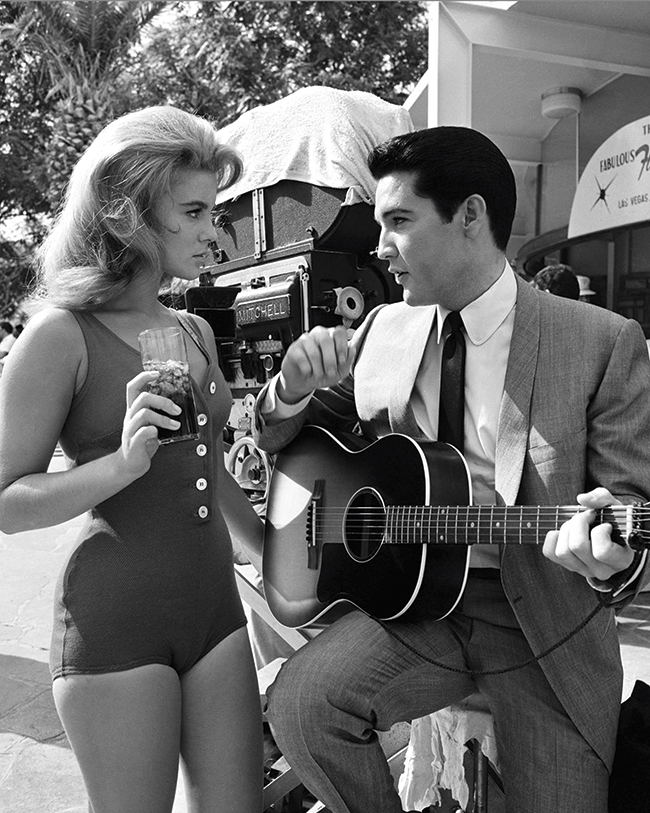
Efforts to reinvent her for the youth market reached a nadir with the release of sexploitation flicks like Mr. Kinky, which wasn’t even released in America until eight years after it had been shot, and C.C. and Company, a 1970 biker film that sees her act opposite football star Joe Namath. In both, she plays a riff on her well-polished sex kitten image, a routine that would soon give way to an adult sexuality that revitalized her career.
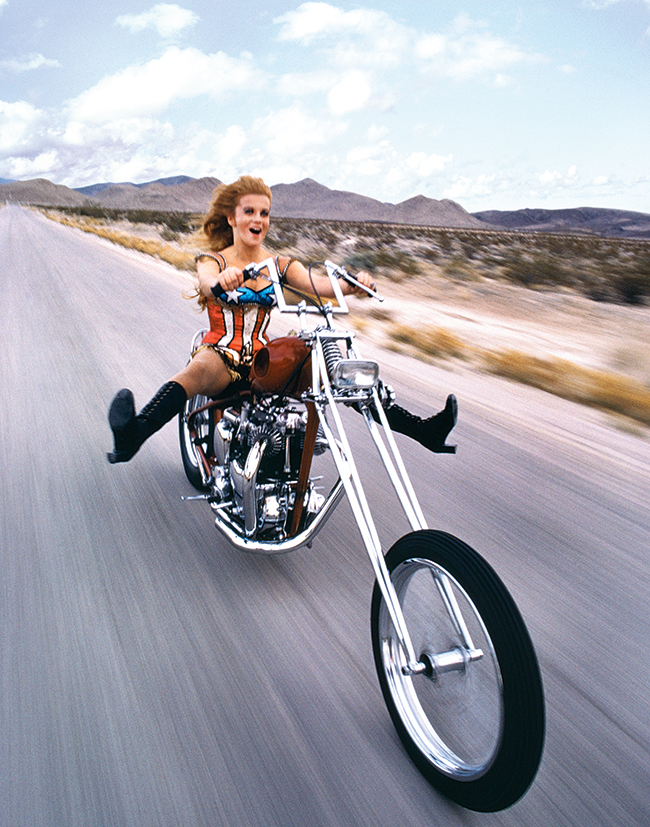
All of Hollywood was puzzled when Mike Nichols cast her as Bobbie, Carnal Knowledge‘s woman on the edge of a nervous breakdown. Ann-Margret’s reputation had been damaged by a string of bad decisions, and she seemed destined to make B-movies forever. In retrospect, it was inspired casting. As an actress who gives up her career to be with the emotionally abusive Jonathan (played by Jack Nicholson), she upped her game, handing in a performance brimming with desperation, aggressiveness and vulnerability. An Academy Award nomination meant she wouldn’t be working opposite Joe Namath again any time soon.
A Whole New World
Playing Bobbie opened up a while new world of roles: adult parts with real juice. Her best work, the Oscar-nominated Nora Walker in the rock opera Tommy and Grumpy Old Men‘s high-spirited widow Ariel Truax, were birthed when she had the guts to shed the be-bopping teen sexuality that had made her a star.
That tenacity and drive to keep working saw her through remarkable and not so remarkable films. Alan Arkin says the secret of her longevity comes from her genuine personality.
“The thing about Ann-Margret is that after working with her on two films, she’s exactly the same as she was the first moment I met her,” he says. “Genuine, warm, funny, open, playful and an absolute joy to work with. She’s devoid of any guile or need to be put on a pedestal. She just loves the work and loves the people she’s working with.”

“I was extra lucky that she and Alan Arkin had not only worked together before,” says director Zach Braff, “but truly love each other and have a wonderful camaraderie and friendship that translates onto their on-screen chemistry as a couple in the film.”
Going in Style‘s Annie is part Bobbie, part Nora Walker, part Ariel Truax and all Ann-Margaret.
“It was so much fun and it reminded me so much of Grumpy Old Men,” says Ann-Margret. “The three of them. I call them Da Boys,” she says of Arkin, Caine and Freeman. “I loved sitting and watching them. To see them having a good time … people of a certain age don’t stop having a good time. You don’t stop enjoying one another’s company. There’s much more to life. You have to keep going. Hey, Slugger. Keep going. Let’s go! Hit it boys! 1-2-3-4!”
A version of this article appeared on the April 2017 issue with the headline, “Viva Ann-Margret!,” p. 36-40.
